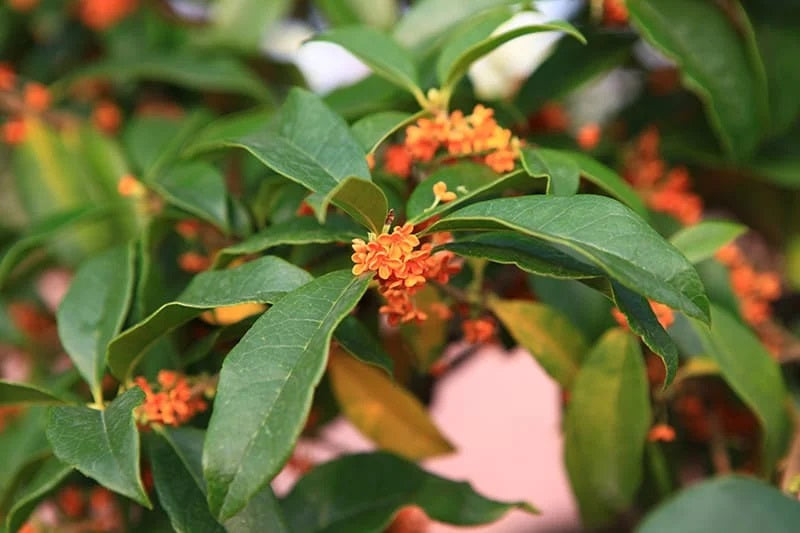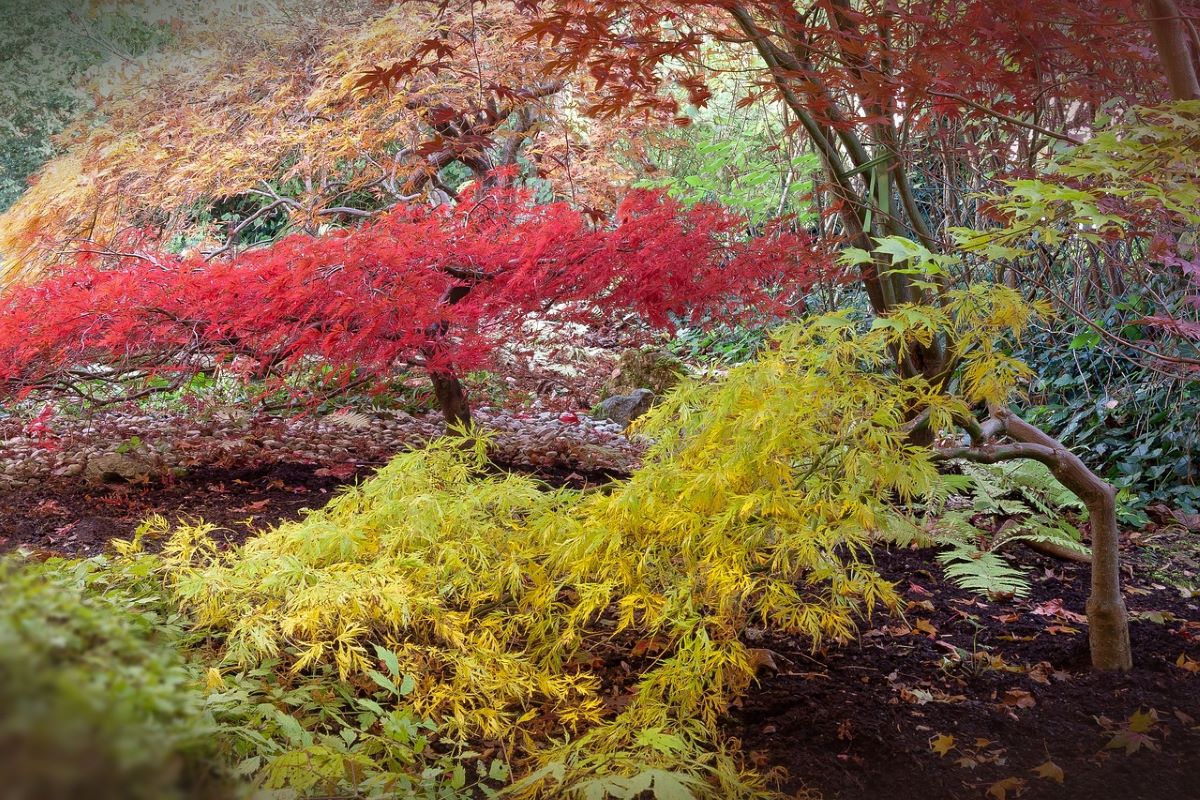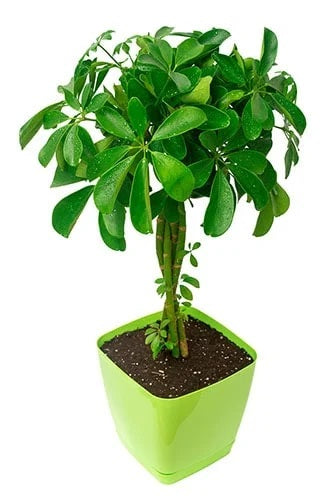If you have spotted a small dark fly buzzing around your hydroponic garden... Read More
- Home >
- 9 Best Plants for a Japanese Garden (with Pictures & Care Guides)
9 Best Plants for a Japanese Garden (with Pictures & Care Guides)
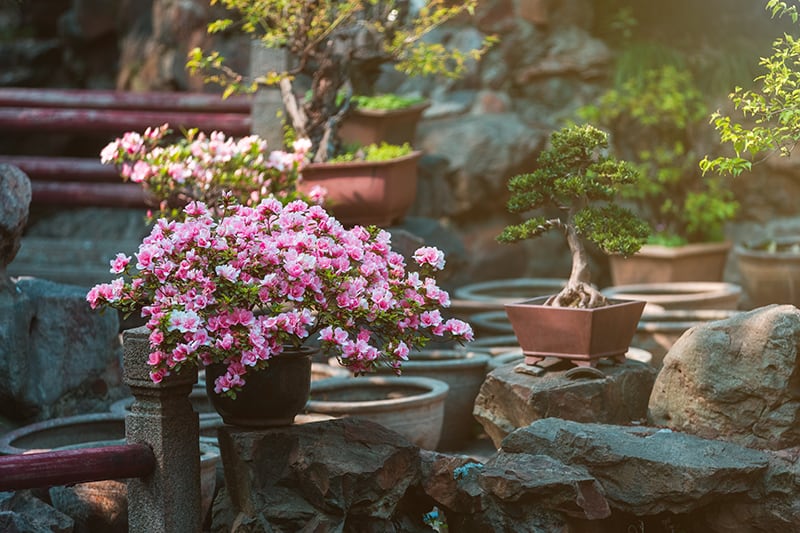
Japanese gardens are designed to focus on meditation, contemplation, and a calming atmosphere. They allow the user to draw inspiration from natural elements, such as water, stone, sand, and living plants. Japanese gardens have a simple yet well thought out design that is centered around symbolism and structure. If you want to create a garden oasis that is based on an oriental style, you will need to carefully select plants that are indicative of Japanese culture and history. Fortunately, many plants that are native to Japan thrive in North American and European climates, so they can be easily incorporated into home gardens. For some of the best plants to give your garden a Japanese style, consider these options:
Plants for a Japanese Garden
1. Japanese Maple
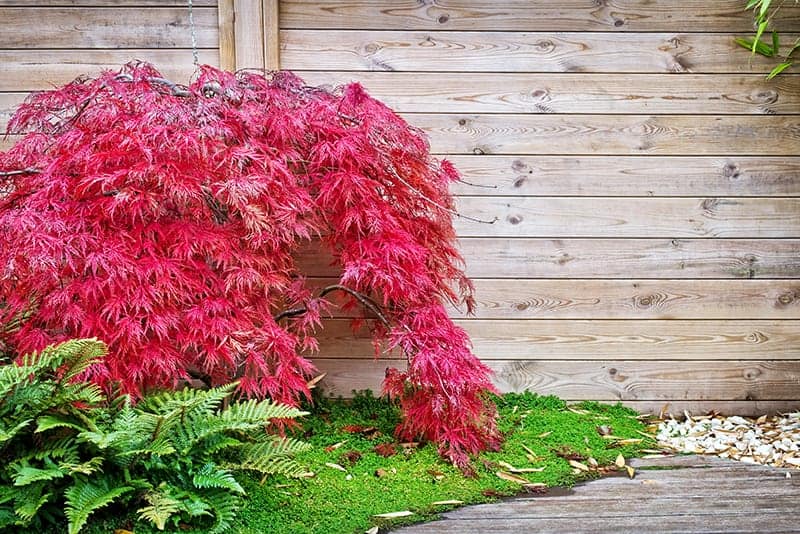
Scientific Name: Acer palmatum
Mature Size: Up to 25 feet tall
USDA Hardiness Zone: 5-9
Light: Full sun to partial shade
Water: Maintain moist soil
Soil: Well-draining, acidic, organically rich
Cultivars and Varieties: Acer palmatum’ Crimson Queen’, Acer palmatum ‘Geisha Gone Wild’, Acer palmatum’ Emerald Lace’
No Japanese garden would be complete without an Acer tree, commonly known as the Japanese Maple. There are so many varieties of these deciduous shrubs and trees that have a huge variation in size, from dwarf varieties that grow to a maximum height of between two and four feet, to larger trees that can exceed 25 feet. They are known for the ease with that they grow and their vigorous but elegant growth habits. They are noted for their stunning fall colors, though some Japanese Maple trees will produce brightly colored foliage all year round, in striking shades of orange, red, yellow, purple, and green.
Their leaves have seven points and are shaped like the common maple tree. These low-maintenance trees make eye-catching specimen plants in containers or grown directly in the ground. They are popular in many types of gardens due to their stunning foliage and their unique and interesting look. They love the sun and moist but well-draining soil.
2. Camellia
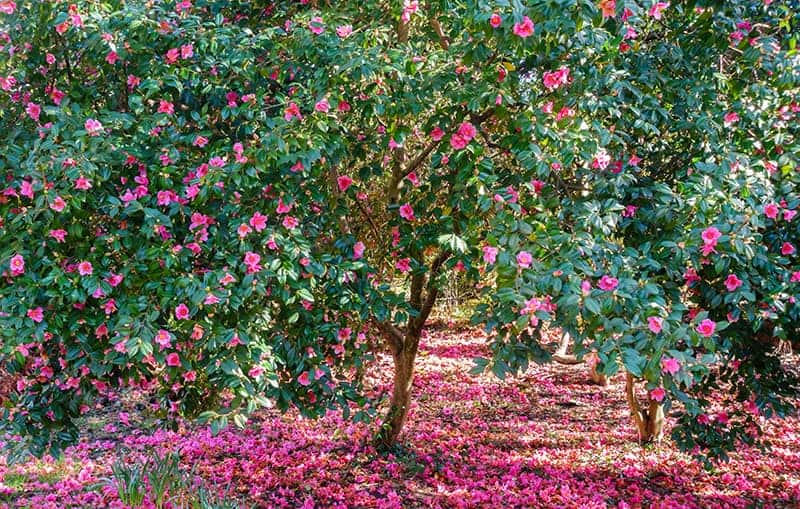
Scientific Name: Camellia japonica
Mature Size: Up to 15 feet
USDA Hardiness Zone: 7-9
Light: Partial shade to full shade
Water: Maintain moist soil
Soil: Acidic, well-draining, rich
Flower Color: White, pink, red
Cultivars and Varieties: Camellia japonica ‘Apple Blossom’, Camellia japonica ‘Ballet Dancer’, Camellia japonica ‘Korean Fire’
These long-lived evergreen shrubs bring lush blooms and glossy foliage to a Japanese garden. They have been traditionally grown in Asia for centuries, where some specimens around the Japanese emperor’s palace are in excess of 500 years of age. They have a structural and ornamental beauty that is synonymous with Japanese styling, and flower during winter to add color to the garden at a typically dull time of year. There are over 30,000 different cultivars of this plant, with a wide variation of flower types. Blooms can measure up to five inches across, and take the shape of single flowers, semi-double flowers, fully double flowers, and peony-style flowers. Blooms come in either pink, red, or white, but there is an abundance of different shades to choose from within these colorways.
These bushy plants can be grown in groups to create a floral hedge or grown as a specimen plant in a container or in a border. They grow well against walls and fences, or with support. As shade-loving plants, these are often used to brighten up a darker corner of the garden. They need consistently moist soil and protection from harsh winds.
3. Hakone Grass
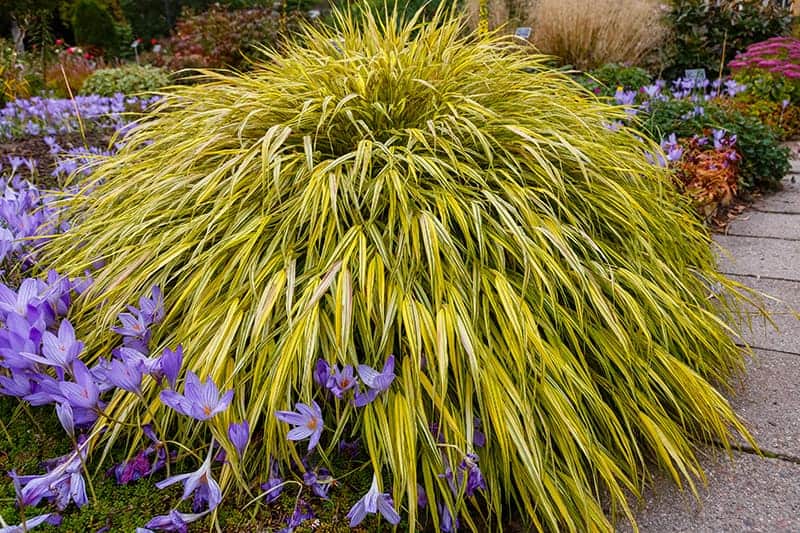
Scientific Name: Hakonechloa macra
Mature Size: Up to 2 feet tall
USDA Hardiness Zone: 5-9
Light: Full sun to full shade
Water: Maintain moist soil
Soil: Rich, well-draining
Flower Color: Green
Cultivars and Varieties: Hakonechloa macra’ Stripe it Rich’, Hakonechloa macra ‘All Gold’, Hakonechloa macra ‘Naomi’
This perennial ornamental grass has a mounding habit to form clumps of fine, cascading foliage. The delicate leaves add a serene and contemplative feel to a Japanese garden, as they gently sway in the slightest breeze. The leaves are a bright and fresh shade of green in spring and summer, then develop to golden-orange in fall and winter. In mid to late summer, sprays of fluffy flowers arise in green colorings, but these are considered fairly insignificant and most often go unnoticed next to the stunning foliage.
This is a resilient grass that is tolerant of full shade or full sun, though it will perform best in partial shade. It loves moist soil, so it will work well alongside water features that are common in Japanese gardens. It can be effectively used as ground cover in the shade of taller shrubs or would work equally well in borders or containers as a specimen plant.
4. Plantain Lily
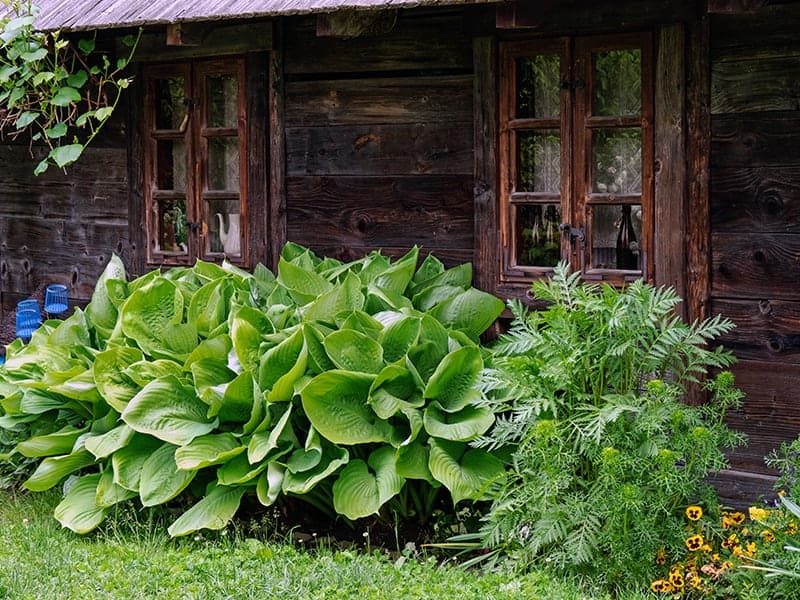
Scientific Name: Hosta sp.
Mature Size: Up to 4 feet tall
USDA Hardiness Zone: 3-9
Light: Partial shade to full shade
Water: Maintain moist soil
Soil: Well-draining, rich
Flower Color: White, purple, blue
Cultivars and Varieties: Hosta’ Cool as a Cucumber’, Hosta’ Empress Wu’, Hosta’ Komodo Dragon’
Hostas, commonly known as ‘plantain lilies,’ or their Japanese name of ‘giboshi,’ are native to Asia and are widespread throughout Japan. Their simple yet interesting aesthetic is one that blends easily into Japanese style gardens. Hostas are grown for their foliage, which is typically large and heart-shaped, though there is some variation between cultivars. They are usually variegated, with leaf edges in accent colors. Foliage can typically be found in shades of dark green, light green, yellow, cream, white, and blue.
These are perennial plants that, though noted for their foliage, also produce pretty flowers on tall racemes in the middle of summer. These small flowers are usually bell or trumpet-shaped and come in a range of white, cream, blue, and lavender shades. These plants thrive in partial shade and need consistently moist soil. They can also grow well in full shade, where they can bring much-needed color to dark or drab areas of the garden.
5. Mondo Grass
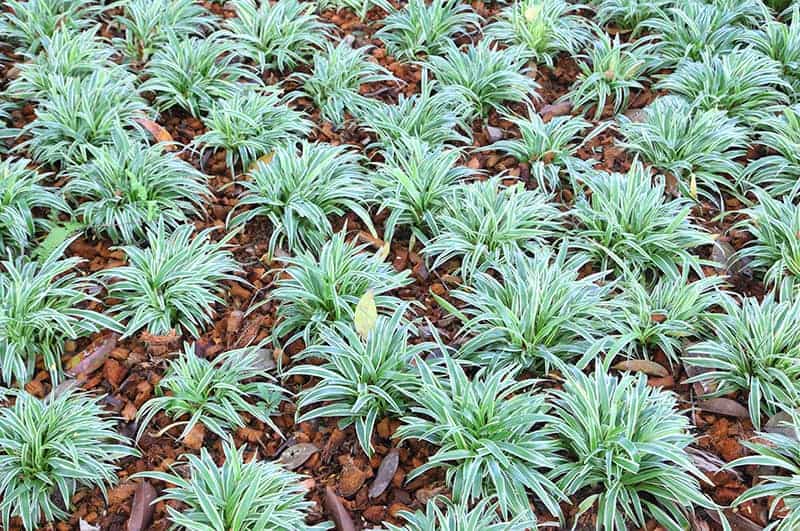
Scientific Name: Ophiopogon japonicus
Mature Size: Up to 1 foot tall
USDA Hardiness Zone: 6-11
Light: Full sun to partial shade
Water: Average moisture needs
Soil: Well-draining
Flower Color: Purple
Cultivars and Varieties: Ophiopogon japonicus ‘Nana Dwarf’, Ophiopogon planiscapus ‘Nigrescens’ (Black Mondo Grass)
This plant, despite its common name, is not actually a grass. It forms dense clumps of long and slender foliage, and will gradually spread over time to form a low growing tufted carpet. As such, this evergreen plant is widely used as an attractive groundcover in Japan, China, and Korea, where it is natively grown.
Mondo grass is typically dark green, but you can also get black mondo grass that has a very contemporary aesthetic and works well as a background or contrast for other colorful plants. The fine strap-shaped foliage of this plant allows it to gently sway in the breeze, making it an invigorating specimen to use in a Japanese garden that is in touch with the senses. This plant performs well in full sun or partial shade and enjoys a moderately moist soil, though it is drought tolerant once established.
6. Oriental Poppy
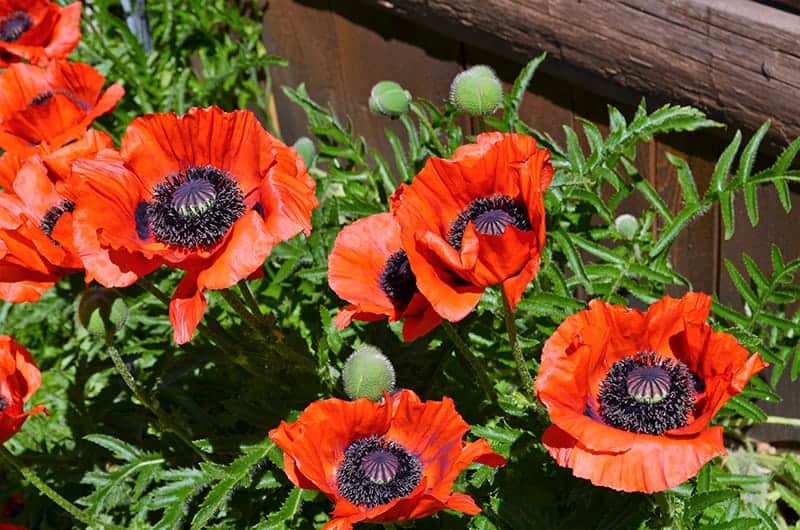
Scientific Name: Papaver orientale
Mature Size: Up to 3 feet tall
USDA Hardiness Zone: 3-9
Light: Full sun to partial shade
Water: Average moisture needs
Soil: Fertile, rich, well-draining
Flower Color: Red, pink, orange, purple, white
Cultivars and Varieties: Papaver orientale’ Burning Heart’, Papaver orientale ‘Fancy Feathers’, Papaver orientale ‘Prince of Orange’
These easy to grow flowers are eye-catching in the Japanese garden, with cheerful flowers that tend to be more elaborate than other types of poppies. Oriental poppies come in a range of colors, with interesting blooms that can have ruffled, flat, or toothed petals. The flowers have a delicate texture that looks as though they have been crafted out of crepe paper. The flowers appear in spring or summer and last for many weeks. They are held on tall, sturdy stems, allowing even the largest blooms to remain upright without support. Grow these plants easily from seed in a position of full sun or partial shade. They thrive in fertile soil.
7. Yoshino Cherry Tree
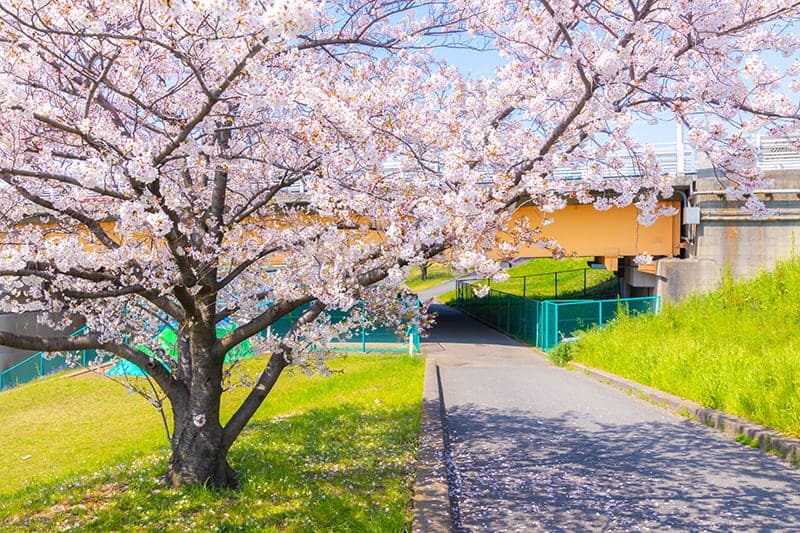
Scientific Name: Prunus x yedoensis
Mature Size: Up to 35 feet tall
USDA Hardiness Zone: 5-8
Light: Full sun
Water: Average moisture needs
Soil: Well-draining
Flower Color: Pink, white
Cultivars and Varieties: Prunus x yedoensis ‘Akebono’, Prunus x yedoensis ‘Shidare-Yoshino’, Prunus x yedoensis ‘Somei-Yoshino’
The Yoshino cherry is a hybrid plant that was developed by crossing the Oshima cherry tree (Prunus speciosa) with the Rosebud cherry tree (Prunus pendula). Both of these parent species are native to Japan, and the resulting Yoshino cherry tree appears naturally as well as artificially across Japan. This tree has become one of the most popular types of cherry trees cultivated across the world in temperate climates. It is a small to medium-sized deciduous tree that is noted for its abundance of beautiful flowers that crowd the bare branches of the tree in spring before the foliage arrives. Blooms are a sweet, candy-floss pink, and have a mild fragrance. They are lush semi-double flowers, which fade to cream and then white while opening up.
The foliage is also attractive, first appearing in glossy deep green, then fading to yellow and bronze before dropping in the fall. The skeleton of the tree remains attractive through winter even when bare, with its wide-spreading canopy that maintains symmetry without pruning. This tree has a moderate growth habit and grows best in full sun. It will adapt to a variety of soil types, including clay, so long as it drains well.
8. Japanese Timber Bamboo
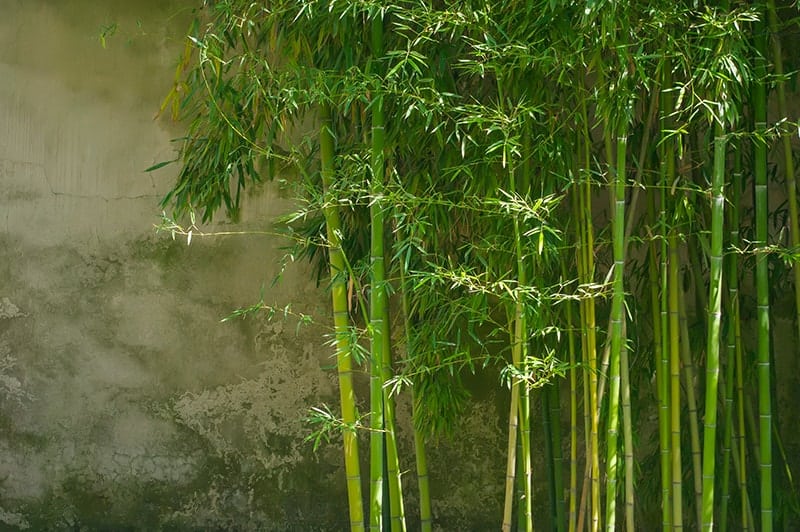
Scientific Name: Phyllostachys bambusoides
Mature Size: Up to 70 feet tall
USDA Hardiness Zone: 7-10
Light: Full sun to partial shade
Water: Maintain moist soil
Soil: Well-draining, fertile
Despite its name, this plant is native to China; however, it has become widespread in Japan, where it is cultivated on a mass scale for use in construction and furniture manufacturing. It is one of the largest types of bamboo, growing to mature heights of between 20 and 70 feet.
This bamboo is especially easy to grow, and due to its straight and upright culms, it makes for excellent privacy screening. This could be utilized in a Japanese garden to create sections within the space, or private areas for meditation and relaxation. The chunky culms of this plant are deep green initially but will mature to a yellow-green. They can be up to six inches thick, with large leaves that can measure up to seven inches in length. Grow this bamboo in full sun or partial shade, in fertile, well-draining soil.
9. Japanese Snowbell
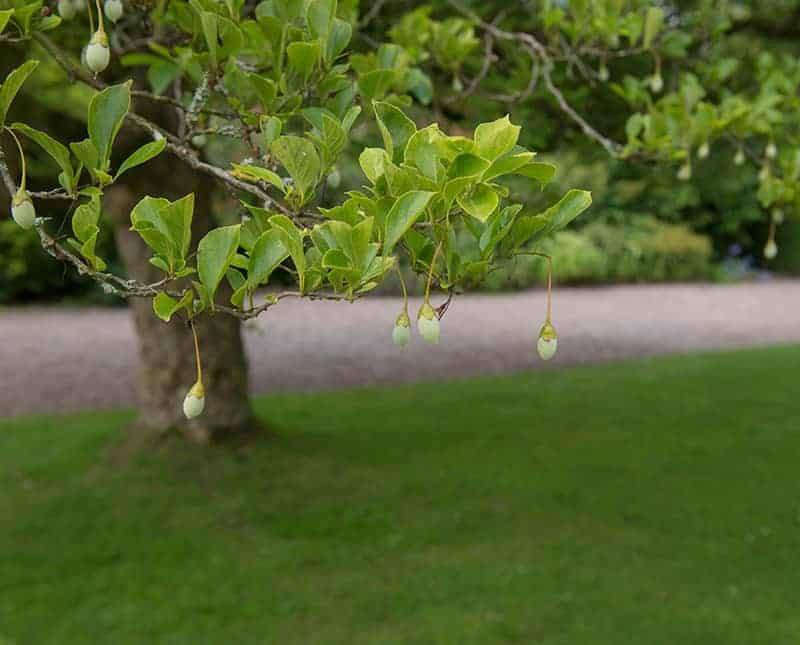
Scientific Name: Styras japonicus
Mature Size: Up to 30 feet tall
USDA Hardiness Zone: 6-8
Light: Full sun to partial shade
Water: Average moisture needs
Soil: Acidic, well-draining
Flower Color: White
This deciduous tree is well suited to a Japanese garden because of its graceful stature and neatly symmetrical crown. It produces an abundance of showy flowers in late spring or early summer, which are highly fragranced, adding a treat for the senses to the garden space. The blooms are bell-shaped and dangle on drooping racemes. The foliage of the tree is also attractive, with ovate shaped leaves in a glossy mid-green shade. As the seasons progress, the foliage fades to yellow before finally becoming copper in the fall and dropping from the tree. On mature trees, the bark of the trunk exfoliates in winter to reveal the orange bark hiding beneath the surface. This adds winter interest so that the Japanese garden can be enjoyed all year round.
Related Content
-
Fungus Gnats – How to Identify, Prevent, and Control Them
-
What is Perlite? What is its use in the garden?
Have you ever used a bag of commercial potting soil? If so, you may have n... Read More
-
8 Best Bedroom Plants That Purify The Air & Improve Your Sleep Quality
If you’ve been thinking of adding some plants to your sleeping quarters, t... Read More
-
Coconut Coir – What It Is, Varieties, and How to Use It
The growing medium meets soil additive, coconut coir (or coco coir for sho... Read More
